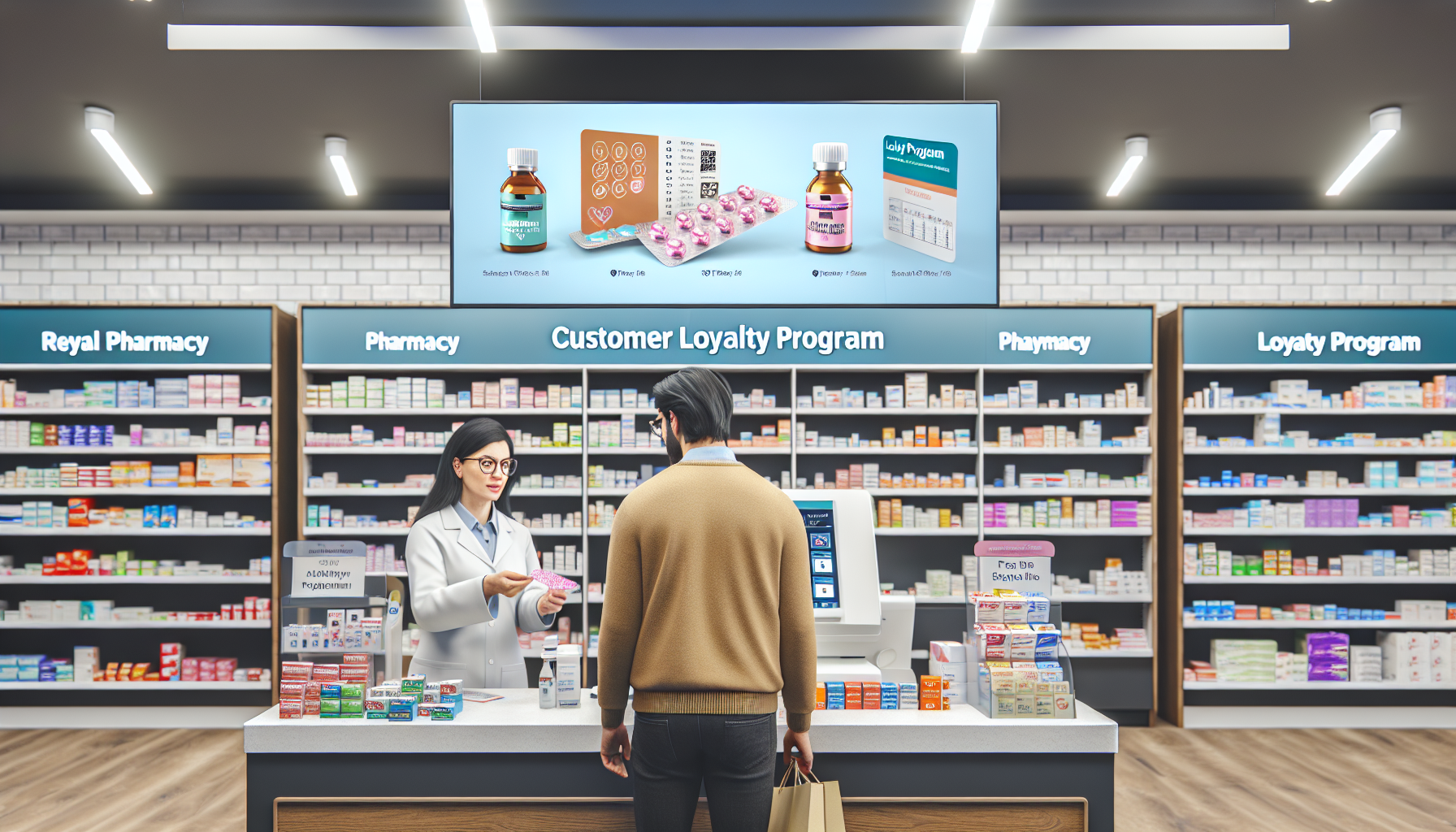As we approach another year, the landscape of pharmacy marketing continues to evolve dramatically. With an ever-increasing number of players in the healthcare space, how do you ensure your pharmacy stands out? I’ve spent time researching and implementing various pharmacy marketing strategies that not only enhance visibility but also foster community loyalty. In this blog post, I want to share the top ten pharmacy marketing strategies for 2025 that I believe will help boost your business. This is based on my experience starting and giving strategic support to a retail pharmacy outfit in Lagos, Nigeria.
1. Optimize Your Online Presence
In today’s digital age, and when you talk of pharmacy marketing strategies, having a robust online presence is no longer optional; it’s crucial. When potential customers search for pharmacies in their area, a user-friendly website with strong SEO practices ensures that you appear at the top of their search results. I’ve discovered that investing time in optimizing your website’s content—not just focusing on fancy graphics but delivering valuable information—makes a world of difference.
For instance, including specific keywords related to your services, like “compounding pharmacy” or “retail pharmacy,” can effectively attract the right clientele. Another essential aspect of online presence is local SEO. As a pharmacy owner, you need to ensure your Google My Business profile is complete and continuously updated. This ensures that anyone who searches for “pharmacy near me” finds you easily. Encouraging happy customers to leave positive online reviews not only boosts your credibility but also improves your ranking on search engines.
Ultimately, a well-optimized online presence allows you to connect with your community far beyond the walls of your store. Lastly, don’t underestimate the power of mobile optimization. Many people in our community will search for pharmacy services on their smartphones while they’re out and about. By ensuring your website is mobile-friendly, you can capture these potential customers quickly and efficiently. Just a few small tweaks can lead to significant increases in foot traffic and sales.
Read Also: Retail Pharmacy Wellness Programs: Unlock Powerful Strategies to Attract and Retain Customers
2. Leverage Social Media Marketing

When I first jumped into social media marketing, I was uncertain about its impact on the pharmacy and which one to leverage. However, I quickly learned that both Facebook and Instagram are invaluable tools for community engagement. I started sharing health tips, and promotions, and spotlighting local events relevant to health and wellness. These posts didn’t just inform; they built relationships. People love to engage with businesses that care about their community, and social media allows for just that.
Creating engaging content is more than just putting up posts; it involves embodying your brand and forging connections. Whether it’s running polls to understand what health topics interest your audience or sharing behind-the-scenes glimpses of your pharmacy, these pharmacy marketing strategies create a sense of community. In one instance, we conducted a medical outreach and we used Facebook to invite the community to the event.
We were able to attract attendees from tens of kilometers from our premises. One can also organize “Meet the Pharmacist” live Q&A sessions on Instagram, where patients can ask health-related questions directly. It will not only educate our audience but also build trust. Active engagement like this can humanize your pharmacy, making it more approachable for anyone in need of your services.
Moreover, don’t forget the power of testimonials and success stories shared via social media. When you highlight professionals who offer excellent service or customers whose lives were positively impacted by your pharmacy, it resonates deeply.
Finally, don’t shy away from paid social advertising. Targeting specific demographics can be an effective way to reach new customers. For example, if you’re promoting a vaccination clinic, running an ad targeting families in your area can yield fruitful results. With tools available to measure the effectiveness of your ads, you can tweak your approach based on real-time feedback, ensuring that your marketing efforts are efficient and impactful.
Check this out! How to Trump Retail Pharmacy Digital Disruption in 7 Ways
3. Implement Email Marketing Campaigns
In my journey as a pharmacy owner, I discovered that email marketing is an underrated yet powerful tool. I started by building a robust email list through our online pharmacy website, encouraging customers to sign up for newsletters during checkout or through a web form on our site. I found that offering something in return, like a percentage discount or exclusive health tips, sweetens the deal for customers. This list serves as an open line of communication where I can share updates, promotional offers, and even helpful advice.
But it’s not enough to just send emails; you also need to keep them engaging. I experimented with different types of emails—newsletters packed with health tips, seasonal promotions, and even special offers. Each email was tailored to appeal to different customer segments based on previous purchases or interests. By personalizing the content, I increased open rates and customer engagement significantly.
Lastly, segmenting our email list allowed us to target specific groups with relevant information. For instance, availability notice for an out-of-stock product to those who bought it before significantly improved participation. Tracking the success of each campaign using analytics helped me refine my strategy over time, ensuring that every email I sent was more effective than the last.
Email marketing became not just one of our pharmacy marketing strategies, and s means of promotion, but a valuable way to maintain relationships with customers, and that made all the difference for my pharmacy.
4. Utilize Customer Loyalty Programs

Implementing customer loyalty programs is also one of the pharmacy marketing strategies for boosting repeat business. A well-structured loyalty program encourages customers to return, rewarding them for their trust and patronage. We offered points for every purchase, which can be redeemed for discounts on future items. Simple, yet effective! The best part?
Our customers love it. Seeing those points accumulate brings them back through our doors time and again. It incentivizes our loyal customers to shop more frequently and deepen their relationship with our pharmacy.
I also learned that promoting the loyalty program effectively is key. Create signage in-store, include information in emails, and highlight it across social media platforms. Sharing stories from happy members who benefited from the program fostered enthusiasm among new customers. The best feedback was witnessing customers referring their friends and family. Word-of-mouth became our most powerful marketing tool—just another reason why focusing on customer relationships can be so beneficial.
Read Also: 8 Game-Changing Tips to Supercharge Employee Retention in Pharmacies
5. Offer Health and Wellness Workshops
One of the unique pharmacy marketing strategies we employed was to host health and wellness workshops, especially during outreaches. These workshops weren’t just advertisements for my pharmacy’s products—they were community enrichment opportunities. Topics varied from nutrition advice and medication management to dental hygiene and infectious disease prevention and management.
My initial concern was whether people would show up; however, I quickly realized there’s a great demand for health education in communities. I partnered with local healthcare professionals to deliver these workshops. By bringing in specialists, we maintained credibility and offered a broader range of expertise. For instance, collaborating with a registered optometrist to run a workshop and eye screening helped attract individuals looking for eye health guidance.
Promoting the events through various channels, from social media to local flyers, ensured we reached a diverse audience. The outcome exceeded my expectations. Not only did attendance numbers grow, but these workshops nurtured trust and loyalty. Participants had the opportunity to ask questions in a low-pressure environment, creating lasting impressions about our pharmacy.
Many of those attendees transitioned into regular customers. They appreciated the value we provided not just as a pharmacy but as an active participant in their health journey. The positive word-of-mouth that stemmed from these events was invaluable, and we learned to track feedback to enhance future workshops even further.
Check This Out! How to Set Up an Online Pharmacy – The Complete Guide
6. Create Targeted Advertising Campaigns
When it comes to advertising, I found that targeting specific demographics can significantly amplify your reach. By focusing on tailored campaigns, I was able to engage customer segments more effectively.
Initially, I experimented with generalized ads, specifically on Facebook but I quickly discovered that precision yields better results. For instance, when running a campaign for fertility-enhancing supplements, targeting women made sense— as this group was statistically more inclined to seek out such supplements compared to men. Platforms like Google Ads and social media offer unique opportunities to create highly targeted campaigns. I used location settings to ensure our ads were reaching people in and around our community.
Additionally, employing demographic filters, such as age and interests, allowed for enhanced relevancy. Crafting compelling ad copy—one that resonates and provides a clear call to action—became critical. When promoting an event or service, I let potential customers know what they stood to gain, whether through health benefits or savings. Ultimately, tracking the performance of ads is where the real learning begins. I utilized analytics tools to evaluate click-through rates and conversion metrics. If an ad wasn’t performing as expected, I didn’t hesitate to adjust my approach—changing visuals, refining copy, or even shifting target demographic parameters. Through this process, I observed substantial improvement in engagement levels, which drove new foot traffic into the pharmacy.
7. Partner with Local Healthcare Providers
Building partnerships with local healthcare providers emerged as a fundamental strategy for my pharmacy’s growth. Working alongside doctors, clinics, and medical laboratories opened numerous avenues for collaboration. We reached out to network with local physicians and specialists to develop referral systems. These partnerships not only highlighted our pharmacy’s services but allowed us to offer comprehensive care solutions for patients.
For example, having a referral agreement with hospitals and medical laboratories brought about holistic care and a symbiotic relationship with other healthcare providers. The most rewarding part of these partnerships is witnessing the holistic impact on patient care. By collaborating with healthcare providers, we could follow up on medication prescriptions directly, ensuring patients received their medications promptly and understood any necessary precautions. This not only reduced misunderstandings but established my pharmacy as a go-to source for health-related inquiries. As a result, customer trust soared, and many expressed appreciation for the seamless referral process.
Read Also: How to Start a Successful Retail Pharmacy in Nigeria in 7 Steps
8. Focus on Personalized Customer Service
This has been one of the most effective pharmacy marketing strategies. In a world where automated responses and impersonal service are the norm, I realized that focusing on personalized customer service could set my pharmacy apart. From the moment customers walk through the door, we make them feel valued. This began with training my staff to recognize regular patients and greet them by name. A simple acknowledgment can make all the difference in creating a welcoming environment.
We also began offering personalized consultations. My pharmacists took extra time to speak with patients about their medications, whether it was understanding side effects or discussing interaction potential with other drugs. Offering individualized sessions allowed us to identify unique needs and provide tailored advice. Many patients expressed gratitude for the one-on-one consultations, sharing that they felt more secure in managing their health.
Tracking and responding to customer feedback further enhanced our personalized service approach. We implemented a feedback system where customers could voice their experiences, both online and in-store. However, I must say this requires consistency which we did not always have, but felt the impact when we did it consistently. It turned out that prioritizing personalized care wasn’t just good business; it transformed our pharmacy into a community pillar rooted in trust and loyalty.
9. Utilize Patient Education Materials
One thing I’ve learned over the years is that education plays a pivotal role in a pharmacy’s success. I made it a priority to provide educational resources to my customers. Whether it’s pamphlets on diabetes management, brochures about hypertension, or guides discussing new medications, having readily available information helps patients make informed decisions about their health. Creating multimedia patient education materials or utilizing the ones provided by pharmaceutical companies became essential.
Supplementing printed materials with videos or infographics meant more dynamic engagement. For instance, we worked on short videos explaining how certain medications work, which we’ve shared on social media. Moreover, distributing these educational materials strategically can create opportunities for deeper conversations.
For my pharmacy, placing brochures in key areas like the waiting area or near the checkout counter meant that patients could pick them up while they waited or were preparing to leave. During visits, when patients expressed confusion or questions about their health, we would often reference these materials and encourage them to take copies home. This not only facilitates learning but signals to patients that we care about their well-being beyond just filling prescriptions.
10. Track and Analyze Your Marketing Efforts
Finally, the significance of tracking and analyzing marketing efforts cannot be overstated. In my experience, this has helped me to refine our pharmacy marketing strategies effectively and allocate resources efficiently. I utilized Google Analytics to track website traffic, social media insights to gauge engagement, and survey tools to collect customer feedback on our services. Each metric served as a benchmark to guide future initiatives.
I initially focused on basic metrics—like website visits and social media followers—but quickly realized that digging deeper into user behavior provided valuable insights. For instance, understanding which email campaigns received the most clicks helped tailor future content, increasing open rates significantly. Likewise, tracking foot traffic trends after targeted campaigns enabled my team to decide which promotions to maintain or revise.
Another useful practice was setting clear goals for each marketing strategy. By determining what success looked like—be it sales increases, new sign-ups for loyalty programs, or attendance numbers for events—I could measure outcomes objectively. Regularly reviewing these metrics with my team fueled ongoing discussions about our marketing effectiveness and sparked ideas for improvements. Ultimately, data-driven decisions have not only guided my pharmacy’s growth, but also equipped me with the knowledge necessary to adapt to the ever-changing landscape of pharmacy marketing.
Read Also: How to run Retail Pharmacy in Nigeria for Success in 7 Steps
Conclusion
As we head into 2025, it’s clear that the pharmacy landscape is full of competitive challenges and plentiful opportunities. Implementing these top ten pharmacy marketing strategies—from optimizing your online presence to focusing on personalized service—has proven essential in not only attracting but retaining customers. By nurturing relationships rooted in trust and education, we create a loyal community that sees us as more than just a pharmacy.
We’re a partner in their health journey, which is invaluable both personally and professionally. Every strategy shared here has been influenced by my direct interactions with customers, insights derived from analytics, and an ongoing commitment to remain informed about industry trends. As we continue to innovate and adapt, I’m excited to apply these pharmacy marketing strategies in a way that not only meets but exceeds customer expectations.
In conclusion, it’s crucial for pharmacy owners to be proactive in their marketing efforts. Whether you’re just starting or looking to refresh your existing pharmacy marketing strategies, remember that the ultimate goal is to serve your community better. By investing in tailored marketing approaches and offering exceptional service, you can ensure your pharmacy thrives in 2024 and beyond. I encourage you to embrace these pharmacy marketing strategies and watch your business prosper as you connect meaningfully with those you serve.

